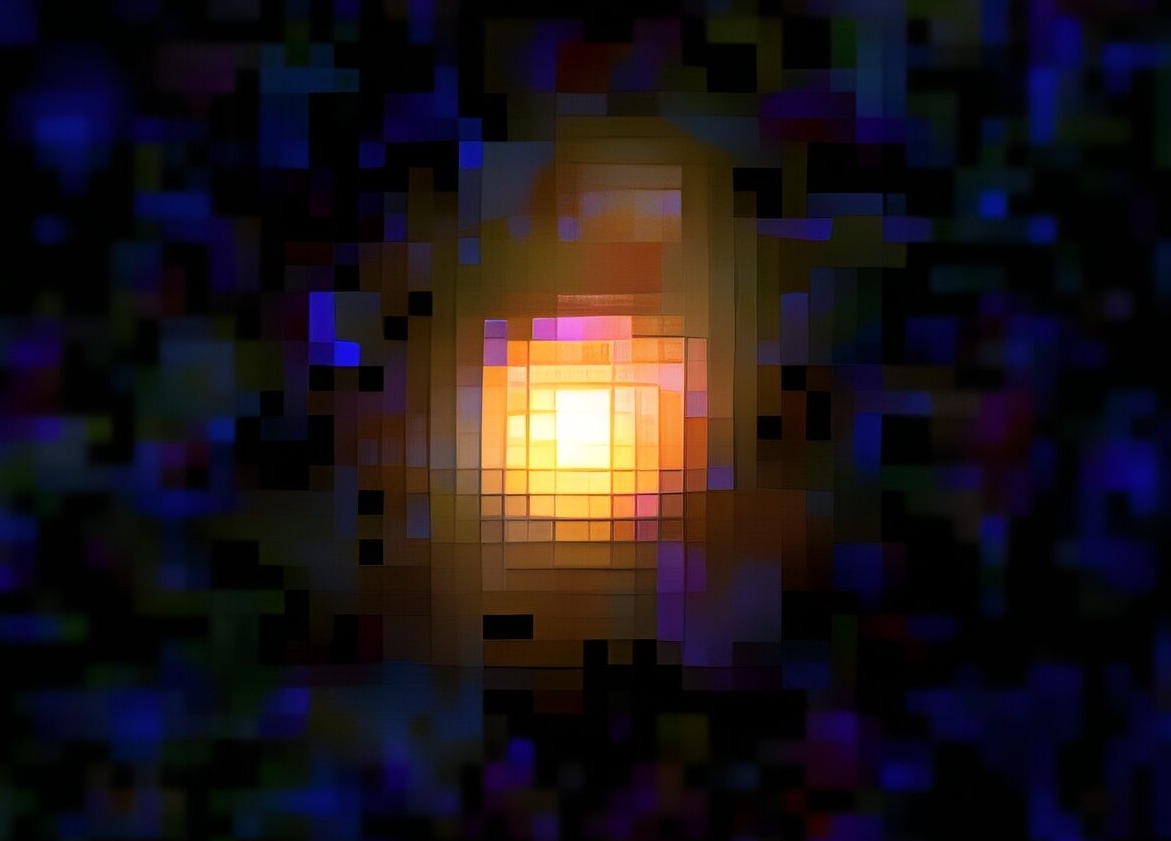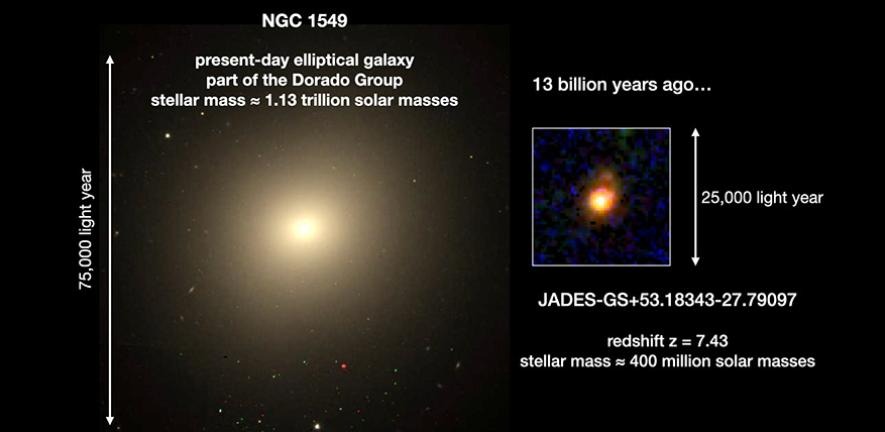Scientists using the James Webb Space Telescope have discovered a new, still theoretical form of galaxies. Photos obtained by WEBB allowed scientists at the University of Cambridge to record a rare galaxy JADES-GS+53.18343-27.79097. The galaxy has a mass of about 400 million solar masses and a diameter of about 1,500 light-years. This is 100 times smaller than our Milky Way, which contains hundreds of billions of stars. The distance to the galaxy is about 13 billion light years, which means we observe it as it was only 700 million years after the origin of the Universe. This surprises scientists as it was thought that full-fledged galaxies didn’t exist during this period. However, new images from the James Webb Space Telescope change these beliefs.

Another unique feature is the structure of this young galaxy. Despite its small size, its core is as dense as modern massive elliptical galaxies have. Interestingly, stars are most actively formed not in the center, but on its outskirts. Even every 10 million years, the mass of stars on the outskirts of the galaxy doubles, which confirms the theory that stellar systems develop “from the inside out”.

Researchers from the University of Cambridge, whose paper is published in Nature Astronomy, compare the formation of galaxies to the movement of a figure skater. Study co-author Dr. Sandro Tacchell explained that when mass accumulates at the center of a galaxy, matter begins to spin faster, similar to the way a figure skater speeds up his rotation by pressing his arms to his body. This rotation contributes to the formation of a spiral or disk, which is typical of many modern galaxies.
Thus, the discovery of JADES-GS+53.18343-27.79097 not only expands our understanding of the evolution of the Universe, but also forces us to revise theories regarding how and when the first galaxies emerged.
We previously reported on how data from the James Webb telescope contradicted reionization models.
According to phys.org


